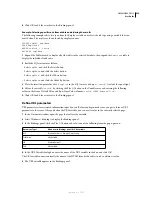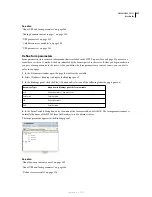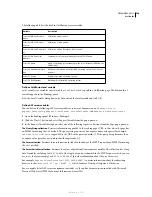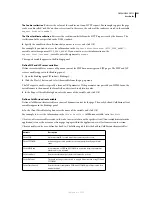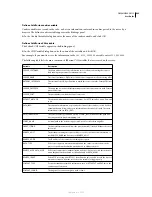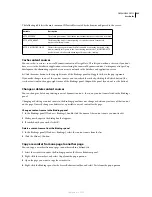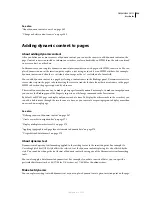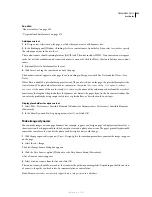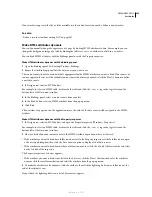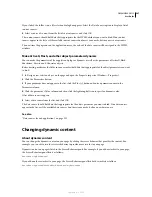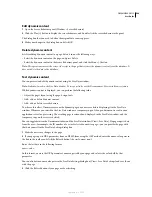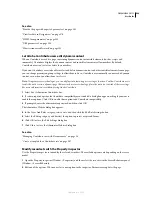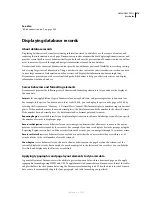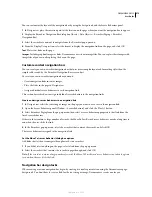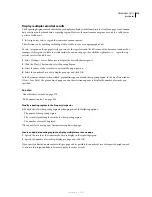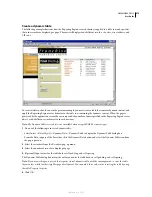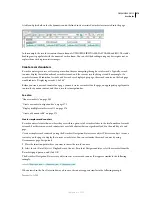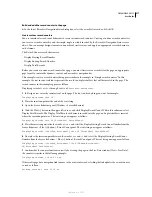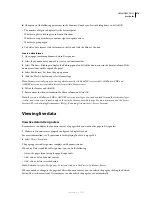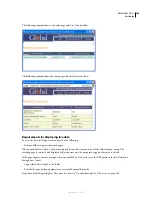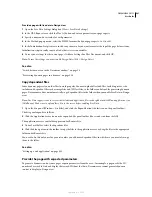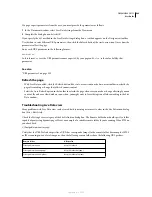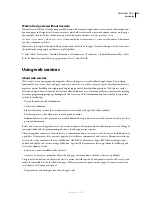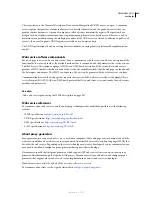
DREAMWEAVER CS3
User Guide
570
See also
“Edit dynamic content” on page 568
Displaying database records
About database records
Displaying database records involves retrieving information stored in a database or other source of content, and
rendering that information to a web page. Dreamweaver provides many methods of displaying dynamic content, and
provides several built-in server behaviors that let you both enhance the presentation of dynamic content, and allow
users to more easily search through and navigate information returned from a database.
Databases and other sources of dynamic content provide you with more power and flexibility in searching, sorting,
and viewing large stores of information. Using a database to store content for websites makes sense when you need
to store large amounts of information, and then retrieve and display that information in a meaningful way.
Dreamweaver provides you with several tools and prebuilt behaviors to help you effectively retrieve and display
information stored in a database.
Server behaviors and formatting elements
Dreamweaver provides the following server behaviors and formatting elements to let you enhance the display of
dynamic data:
Formats
let you apply different types of numerical, monetary, date/time, and percentage values to dynamic text.
For example, if the price of an item in a recordset reads 10.989, you can display the price on the page as $10.99 by
selecting the Dreamweaver “Currency - 2 Decimal Places” format. This format displays a number using two decimal
places. If the number has more than two decimal places, the data format rounds the number to the closest decimal.
If the number has no decimal places, the data format adds a decimal point and two zeros.
Repeating Region
server behaviors let you display multiple items returned from a database query, and let you specify
the number of records to display per page.
Recordset Navigation
server behaviors let you insert navigation elements that allow users to move to the next or
previous set of records returned by the recordset. For example, if you choose to display 10 records per page using the
Repeating Region server object, and the recordset returns 40 records, you can navigate through 10 records at a time.
Recordset Status Bar
server behaviors let you include a counter that shows users where they are within a set of
records relative to the total number of records returned.
Show Region
server behaviors let you choose to show or hide items on the page based on the relevance of the
currently displayed records. For example, if a user has navigated to the last record in a recordset, you can hide the
Next
link, and display only the
Previous
records link.
Applying typographic and page layout elements to dynamic data
A powerful feature of Dreamweaver is the ability to present dynamic data within a structured page, and to apply
typographic formatting using HTML and CSS. To apply formats to dynamic data in Dreamweaver, format the tables
and placeholders for the dynamic data using the Dreamweaver formatting tools. When the data is inserted from its
data source, it automatically adopts the font, paragraph, and table formatting you specified.
September 4, 2007

